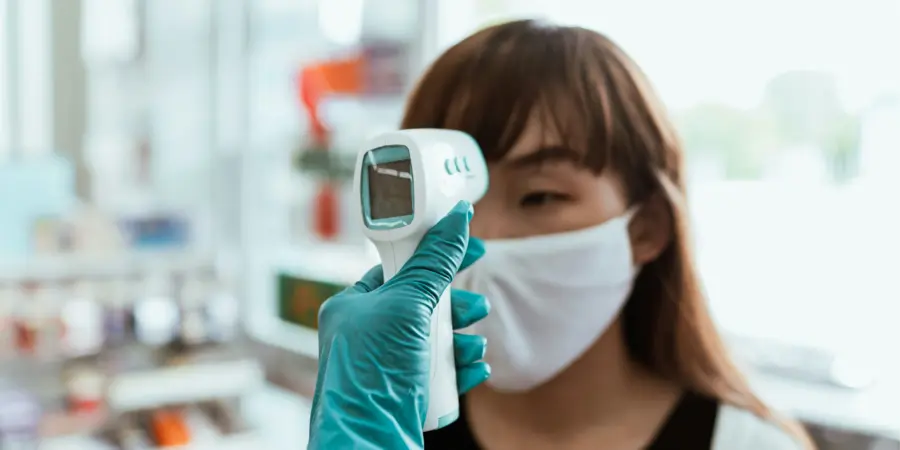When we think of space travel, we usually picture rockets, Mars rovers, and brave astronauts floating in zero gravity outside of the International Space Station. We rarely think of the glasses we wear, or the camera in our mobile phones. Due to the extraordinary constraints and technical requirements of items needed for space travel, vast amounts of new technologies were developed that have since become mainstays in our everyday life down on Earth. In this short article, we’re looking at eight things that have their origins in space exploration.
Wireless headphones
Wireless headsets were first developed by NASA during their early programmes sending humans into space and landing on the Moon, such as the Apollo and Mercury programmes. They were created so that astronauts could move freely around the spacecraft without the constraint of cabling. Such technology is now widely used to listen to music or even your favourite podcast (which is obviously the Ri science podcast!)

Memory foam
Open-cell polyurethane-silicon plastic (now simply known as memory foam) is found in many mattresses, as well as hospital beds to prevent bedsores, and even American football helmets. However, such technology was originally developed back in 1966 by the Ames Research Center to lessen the impact felt by astronauts upon landing back down to Earth.
Cordless vacuums
When astronauts first landed on the Moon, NASA wanted to collect Moon rocks for analysis. A small portable drill was designed by the toolmaking company Black & Decker. In turn, they optimised the design and motor while minimising electrical consumption, leading to the development of the first cordless vacuum cleaners: we now use this technology (in a much less exciting way) to clean our homes.
Infrared thermometers
Based on the technology used to measure the infrared radiation being emitted by distant stars, The Jet Propulsion Lab, along with Diatek Corporation, developed the aural thermometer that is used to measure the temperature of a surface or person using infrared light.

UV blocking sunglasses
In the 1980s, the Jet Propulsion Laboratory were studying the harmful properties of light in space, as well as radiation produced when performing welding work; such light can harm unprotected eyes. Scientists developed technology that filtered out harmful radiation, only permitting certain wavelengths of visible light through the lens to protect the eyes of someone welding. This technology was then applied to sunglasses that you wear for everyday life to protect from damaging UV radiation from the Sun.
Scratch resistant coating of glasses
Following on with the glasses theme: scratch resistant lenses were also developed with NASA technology, by the Lewis Research Center. This is a coating of lenses with a film of diamond-like carbon, that is much stronger than just glass, to prevent scratches from obstructing your vision.
Mobile phone cameras
Mobile phone cameras are remarkably small — and you have NASA researchers to thank for this too. Faced with the need to make research-quality cameras that take up less space, they developed a smaller and lighter image sensor than was available at the time. This technology is now found in approximately 1/3 of all mobile phone cameras.

And there's much more — but not Velcro!
This is only scratching the surface! Additives to baby formula, sports trainers, water purification systems, home insulation, and many more were originally developed for space travel that we now use in our everyday lives.
However, one myth believed by many is that Velcro was developed for space flight— but it was not! It was, in fact, developed over 20 years before the first time a human was sent to space: in the 1940s, by George de Mestral. However, perhaps where the myth arose, NASA popularised the use of Velcro by its extensive use in space missions to secure equipment in zero gravity.
So, the next time you wake up refreshed in the morning, take a selfie, or vacuum the house, you have space travel to thank for the convenience of our everyday lives.
We're taking this year's CHRISTMAS LECTURES to new heights!
For the 200th anniversary of the CHRISTMAS LECTURES, supported by CGI, we're going into orbit!
Space scientist Dame Dr Maggie Aderin-Pocock is taking us on a voyage through the Solar System and beyond, in the search for evidence of extra-terrestrial life.
Tune in to BBC Four in late December.
About the author
Joshua Horton is a PhD research student at the Quadram Institute in Norwich.
His research project investigates the regulation of biofilm formation in common foodborne pathogens such as Salmonella. As part of his PhD programme, the NRPDTP supported by the BBSRC, he recently completed a 3-month internship at the Ri with the digital team.
He can be found on Bluesky at @jcihorton.bsky.social
